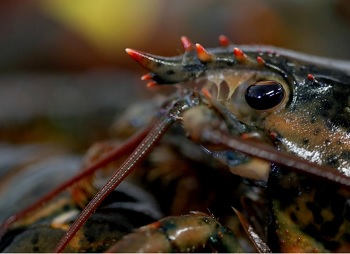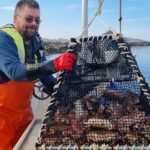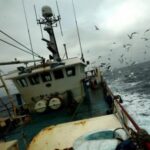Tag Archives: lobster stocks
Norway: Protection zone’s unexpected consequences hit local fishermen
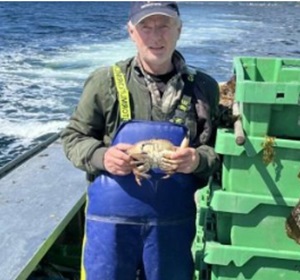 Norway’s Directorate of Fisheries is being urged to issue a dispensation allowing commercial fishermen to fish for wrasse and crab inside a newly created conservation area for lobster near Stavanger. The Norwegian Fishermen’s Association (Norges Fiscella) believes that such a dispensation can be made without any negative effects on conservation. These measures were introduced to protect over-exploited lobster stocks, but this has had unforeseen consequences for local fishermen, as Norges Fiskarkag and local association Sør-Norges-Fiskarlag have taken the initiative in drawing attention to this issue. more, >>CLICK TO READ<< 11:54
Norway’s Directorate of Fisheries is being urged to issue a dispensation allowing commercial fishermen to fish for wrasse and crab inside a newly created conservation area for lobster near Stavanger. The Norwegian Fishermen’s Association (Norges Fiscella) believes that such a dispensation can be made without any negative effects on conservation. These measures were introduced to protect over-exploited lobster stocks, but this has had unforeseen consequences for local fishermen, as Norges Fiskarkag and local association Sør-Norges-Fiskarlag have taken the initiative in drawing attention to this issue. more, >>CLICK TO READ<< 11:54
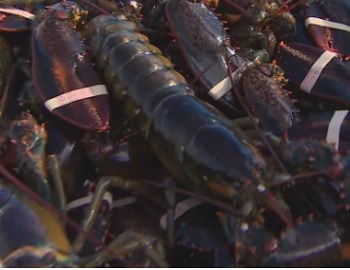
Conserving lobster stocks: Lobster landings data released by DFO show complex picture
Both Mi’kmaw fishers and people who work in the commercial fishing industry say conservation is a key concern. Some in the commercial fishing industry have pointed to declining lobster catches as evidence of potential harm to the fishery. The Bay of Fundy Inshore Fishermen’s Association has said it has concerns about the amount of lobster being landed in St. Marys Bay, which it says has declined 68 per cent since 2016. Fisheries and Oceans Canada released data showing a decline from the record highs in 2015-16. However, an examination of the 18 years of data shows a nuanced picture. >click to read< 08:10

Fisheries Minister Jordan: A new path for First Nations to fish in pursuit of a moderate livelihood
We have never stopped working with First Nations to reach agreements and implement their right to a moderate livelihood. That is why effective this season, we will introduce a new path for First Nations to fish in pursuit of a moderate livelihood, one that addresses much of the feedback we’ve heard over the past year. This plan will support individuals, their families, and their communities. It’s a path that is flexible, adaptable, and based on three key principles: implementation of First Nations Treaty rights, conservation and sustainability of fish stocks, and transparent and stable management of the fishery. >click to read< 21:53
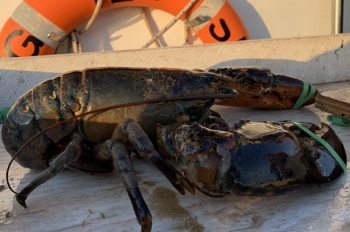
Lobster: the last, best fishery – Part 2, The new cod?
“Another likely contributing factor is the large amount of food the fishery provides to lobsters, as many lobsters escape traps after having fed on its bait; it has been said that we are basically ranching lobsters,” says Rochette. Also, as reported in Part 1, increasing water temperature has so far been  favourable to lobsters in Canada, given we are in the northern part of the species’ range. But for how long can that last, as waters continue to warm? And what lessons have we learned from the collapse of the groundfish stocks? Could lobsters be the new cod? photos, graphs, video, even Boris Worm! >click to read< Part 1, November 26, 2020 >click to read< 13:18
favourable to lobsters in Canada, given we are in the northern part of the species’ range. But for how long can that last, as waters continue to warm? And what lessons have we learned from the collapse of the groundfish stocks? Could lobsters be the new cod? photos, graphs, video, even Boris Worm! >click to read< Part 1, November 26, 2020 >click to read< 13:18
Lobster diversity startles fisheries research group
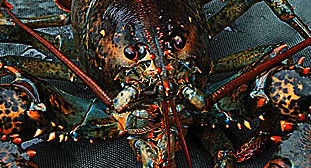 The Canadian Fisheries Research Network, a collaboration between academic researchers, the fishing industry and government, recently wrapped up several research projects that began in 2010, shortly after the group was founded. One of those projects included an exhaustive look at lobster stocks in 17 locations from Newfoundland all the way to Rhode Island. There were five components to the research, including a genetic study — the first of its kind in the world — in which researchers sequenced more than 10,000 little stretches of DNA on lobsters from each of those locations. What they found took them by surprise. Read the rest here 19:35
The Canadian Fisheries Research Network, a collaboration between academic researchers, the fishing industry and government, recently wrapped up several research projects that began in 2010, shortly after the group was founded. One of those projects included an exhaustive look at lobster stocks in 17 locations from Newfoundland all the way to Rhode Island. There were five components to the research, including a genetic study — the first of its kind in the world — in which researchers sequenced more than 10,000 little stretches of DNA on lobsters from each of those locations. What they found took them by surprise. Read the rest here 19:35






